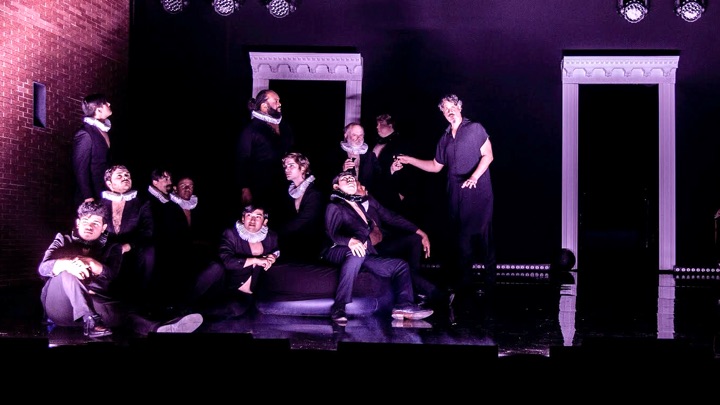
But what about Juliet? I guess she just marries Count Paris like she’s supposed to never knowing any better and becomes an unhappy housewife like her mother Lady Capulet… Is it like the old adage “It is better to have loved and lost than to never have loved at all”? Or maybe it all just sucks—you fall in love, get hurt and then you die.
I sat through two early-Renaissance Italian romantic tragedies this week—Teatro Grattacielo’s Giulietta e Romeo by Riccardo Zandonai and Verdi’s Rigoletto at the Met and I don’t have any answers for you. However, Ruth Ann was right about one thing—cutting loose a lying, two-timing douchebag, making a fresh start and trading up for a younger, fresher and nicer piece is always a good idea.
Stefanos Koroneos, the Greek-born baritone who took over as general and artistic director of Teatro Grattacielo, in the program notes quoted Federica Fortunato, director of the R. Zandonai International Study Center in Rovereto, that “the story of Giulietta e Romeo lends itself to being a metaphor of our time: love, tenderness and friendship opposed to the logic of blood and power.”
But isn’t that most tragic opera including (and especially) Rigoletto where both the jester and his daughter (and their analogues Monterone and his daughter) are sacrificed in blood to the cruel logic of power and privilege?
Zandonai’s opera premiered on February 14, 1922 at the Teatro Costanzi in Rome and is celebrating its centenary this year. There has never been a full production in New York as far as I know. The two performances on June 4 and 5 were the local premiere. The libretto by Arturo Rossato is taken from pre-Shakespearean Italian sources—the novellas of Matteo Bandello and Luigi Da Porto.
Missing in action are Mercutio, the Nurse, Lord and Lady Capulet and crucially Friar Lawrence—also the poetic language of Shakespeare. Rossato’s libretto pits earthy Cavalleria Rusticana type street confrontations against florid poetic allusions in the love scenes excising or minimizing ancillary characters and subplots. What we are left with is a series of intense primal confrontations involving Romeo and Juliet together or Romeo or Juliet versus Tybalt/Tebaldo who embodies the opposition of their families and society.
We start, as in Romeo and Juliet and West Side Story with a confrontation between the Capulets led by Tebaldo (baritone) and the Montagues outside a tavern. The street fighting is stopped by a masked Romeo who counsels an end to violence and hatred. The scene dissolves to the familiar balcony scene encounter between the lovers Romeo and Juliet.
But these lovers have not just met and are not young innocent adolescents—it is clear that they have an ongoing affair and have been physically intimate. Giulietta refers to Romeo as her “husband”. They also don’t sing like teenagers—the score requires a trio of spinto-dramatic soprano/tenor/baritone voices suitable for Tosca or Andrea Chenier.
The second act has a hair-raising confrontation between Tebaldo and Giulietta where he reveals that he knows of her affair with Romeo and demands she marry the Count Lodrone. Romeo makes his way to Giulietta but is intercepted by Tebaldo who challenges him to a duel. Forced to defend himself, Romeo kills Tebaldo and is banished by proclamation of the town herald.
The third act shows Romeo in Mantua (setting of Verdi’s Rigoletto) overhearing a street singer performing a ballad describing the death of Giulietta, the fairest flower of Verona, on her wedding day. Romeo rushes through a storm to the tomb of the Capulets and drinks poison over Giulietta’s supposed corpse. (Cue the opera’s most famous aria “Giulietta, son io” recorded by both the original 1922 Romeo, Miguel Fleta and famously by Mario Del Monaco.


The dramaturgy is tight and fat-free clocking in under two hours of music. The vocal writing is mostly declamatory with a some extended sections of arioso which do not rise to melodic heights. Giulietta does not have an extended solo aria—a potion scene aria might have made the dramaturgy of the final act somewhat clearer. Zandonai’s musical vocabulary contrasts blood and guts verismo drama against a rather French “art nouveau” impressionistic lyricism evocative of Debussy, Chausson and Fauré.
The somewhat “decadent” impressionistic music also evoked Zandonai’s most famous and successful opera Francesca da Rimini. I found the 2013 Metropolitan Opera Francesca revival difficult to sit through due to the diffuse, empty and sometimes unpleasant score (the miscast leads didn’t help).
A friend once proposed that the stunningly beautiful 1984 physical production by Piero Faggioni with gorgeous sets by Ezio Frigerio and costumes by Franca Squarciapino might be recycled for a superior opera—why not Giulietta e Romeo? All my friends and acquaintances in attendance last Saturday night felt that Giulietta e Romeo was a better opera than Francesca da Rimini. It is shorter, more effective dramatically with a higher level of musical and dramatic intensity and inspiration. (Domingo and Scotto circa 1984 would have done well as the ill-fated Veronese lovers).
Teatro Grattacielo’s production (in collaboration with the Battery Park City Authority) was insanely ambitious and invited mishaps. Though not all was perfection any potential disasters were avoided and the quality of the work shone through. It was presented outdoors on two consecutive nights (not easy on the performers as this is not an ensemble work) in Robert F. Wagner Jr. Park in Battery City Park downtown.
A reduced orchestration for 30 players (down from the 67 in the original score) played live while the singers performed on a postage stamp-sized stage to the right of the orchestra. The brick wall and arches above and behind the orchestra were the backdrop for projections designed by Camilla Tassi—those that were more abstract were more effective.
The set consisted of a black wall with two doorways with a platform or balcony above. The sets and costumes designed by Tasos Protopsaltou tended towards the simple, timeless, functional and all-black. The direction of Stefanos Koroneos was practical, efficient and got the job done with no extras.
Both the solo singers and the orchestra were amplified by what I was told were aerial mikes. I feared the sound cutting out, distortion and even police dispatches being picked up on the mikes. There was none of the above—the sound was clear and well-defined throughout though the miking did add a metallic halo to the singer’s voices.
The orchestra was less well caught by the sound design—it failed to blend with the voices inhabiting a separate parallel sonic landscape. The conducting of the enthusiastic young Italian conductor Christian Capocaccia brought passionate verve to Zandonai’s orchestral composition with clear forward-moving tempos and well-defined textures enhancing the atmospheric drama in the score.
Koroneos’ long experience as a professional singer lends to being a good judge of voices and scouter of vocal talent. The cast was uniformly good and even the smaller roles were cast with accomplished young voices like Jeremy Brauner, David Santiago and Diego Valdez.
As for the leads, tenor Matthew Vickers as Romeo managed the typical verismo high declamatory vocal writing with a rich, plangent tone that was never compromised by forcing or shouting always maintaining a flowing lyric line.
Greek soprano Eleni Calenos did have tonal edge on her forte high notes but was a stylish interpreter with a fascinatingly complex smoky middle register full of resin and shifting dark colors. Calenos is a slender petite woman with a big voice. She has natural stage presence as I witnessed in her Tosca with Loft Opera some years ago in a bus depot in Bushwick. Like other Greek sopranos we could mention, Calenos makes good use of text and dramatic intention.
Baritone Franco Pomponi, many years resident in Europe and popular in France, conquered Tebaldo’s high tessitura and constant testosterone aggression with vocal command and unflagging energy making for a formidable antagonist. Tenor Spencer Hamlin as the Cantatore who imparts heartbreaking news to Romeo in Act III, brought an arresting, bright tenor to the madrigal-like phrases of his ballad. The small chorus was more a collection of solo voices than a blended unit but the voices were fresh and well-rehearsed.
The winners of the evening were the composer Riccardo Zandonai and Teatro Grattacielo which pulled off a near-impossible feat with success.
Bartlett Sher’s new Rigoletto production at the Metropolitan Opera came in for some deserved criticism when it premiered last winter. A second cast in a spring return engagement brought a new prima donna and some reconsidered staging making a superior overall impression.
The most striking member of the cast was coloratura soprano Erin Morley as Gilda replacing Russian soprano Kristina Mkhitaryan in what turned out to be one of her best Met Opera assumptions yet. Morley’s voice was radiant and shining providing a beacon of youth and virtue in the darkly lit, constantly randomly shifting milieu of Sher’s production. Her coloratura and high notes were like beams of light and her trills were immaculate. Her tone and passage work were brighter, clearer and cleaner than Rosa Feola’s fruity darker lyric soprano in the premiere cast.
Sher’s conception of Gilda is that she is a real adolescent girl with anger at her confined situation to the point of rebellion. Morley honored that interpretation but also suggested innocence and naiveté that was about to be corrupted and abused. Gilda’s emotional connection to her father was helped by new blocking in Act II that placed both singers on the same floor and room of Rigoletto’s house. Morley got the biggest ovation at the end of the evening with the audience rising for her.
Tenor Stephen Costello was a well-sung but bland Duca di Mantova. The high notes were easy but invariably attacked loud though he eschewed the high D at the end of “Possente Amor.” His tone has one generic color though it is pleasant. As usual, Costello cut a rather passionless dull figure onstage—his eyes were dead and his dashing Duke seemed more young accountant than libertine.
Returning as Rigoletto, Hawaii-born baritone Quinn Kelsey made a moving Jester. His craggy baritone booms out with anger or despair though he has a few dead spots in the middle range where the tone turns cloudy and a bit rough. Kelsey understood the tortured bitterness of the character and was arresting vocally and dramatically throughout.
Croatian bass Ante Jerkunica and Russian mezzo-soprano Yulia Matochkina were both strikingly effective and vocally adept in their Metropolitan debuts. Matochkina’s potent and imposing tone suggested that she was capable of handling bigger assignments. I liked Jerkunica’s deadpan cool and unflappable manner as well as his focused potent basso.
Versatile conductor Karen Kamensek did a great job in the pit alternating Verdi with Philip Glass this month. Her reading was incisive but also had musical breadth and lyricism.
Sher’s Act IV staging is still a disaster with the Duke deciding to take a stroll outdoors into an impending thunderstorm for no reason when Sparafucile would wish him to remain in the inn to be whacked. Gilda’s presence in the room while Sparafucile and Maddalena plot to murder a stranger was made briefer—she overheard most of the conversation in the next room.
Gilda then stepped past the fourth wall into the front room and handed the knife to Sparafucile in what seems to be intended as some sort of psychological projection fantasy. She then stepped around to knock on the front door to her impending doom. It now seems clearer but still idiotic but we don’t think that Gilda has an invisibility cloak on or that Sparafucile and Maddalena are intermittently deaf, dumb and blind to another person in the room.
Morley’s radiant injured innocence and Kelsey’s volcanic, authoritative Rigoletto provided a compelling dramatic central focus which allowed us to ignore the hyperactive moving scenery and misguided directorial touches in this Rigoletto production.
Photos: Gustavo Mirabile (Giulietta); Ken Howard (Rigoletto)

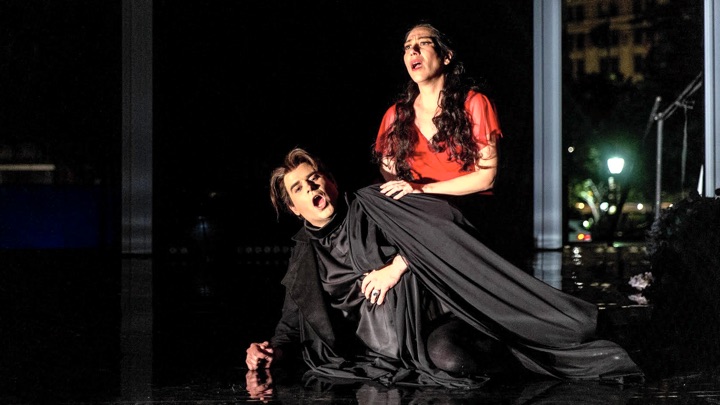

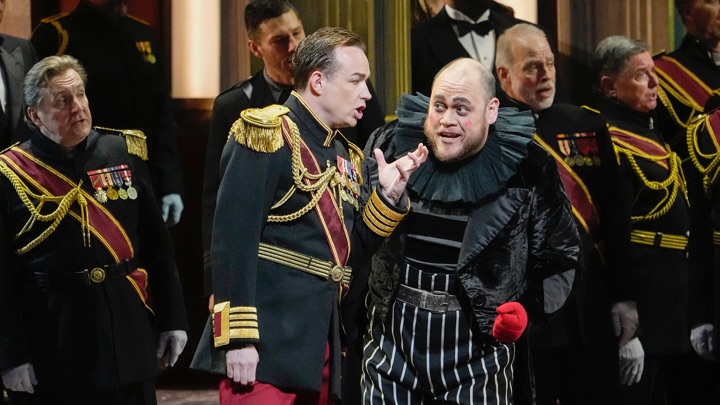
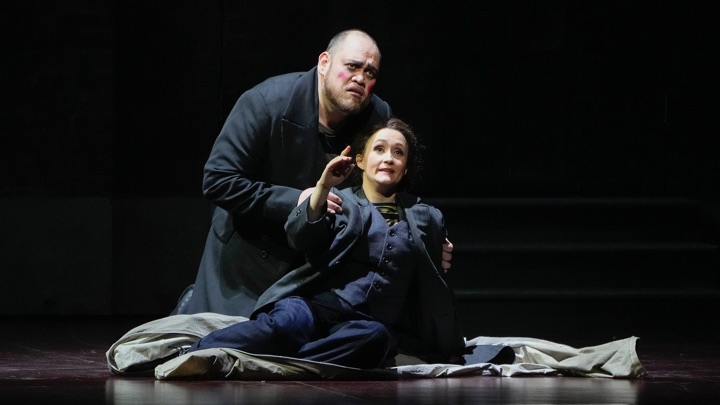

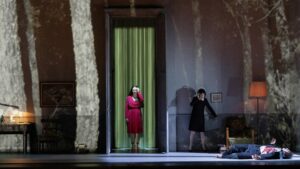
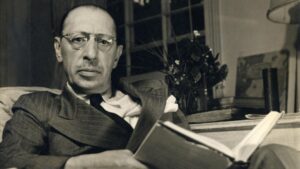

Comments